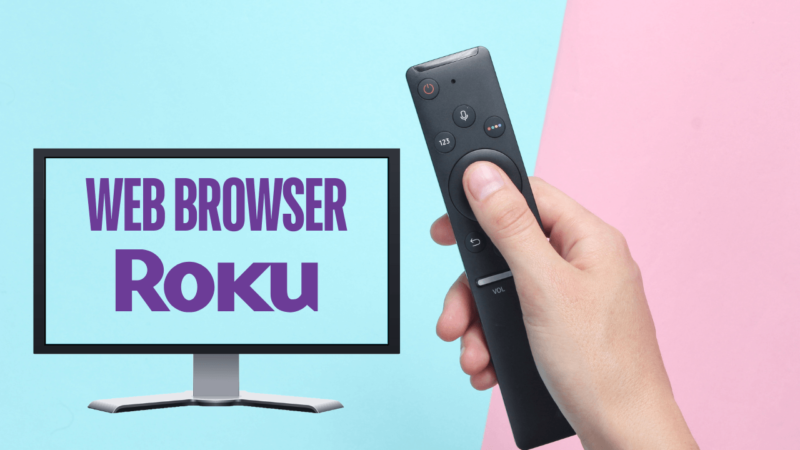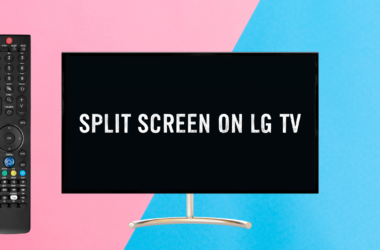Roku has become one of the most popular streaming devices worldwide, offering millions of users access to their favorite movies, shows, and apps. However, one common question remains: Can you use a web browser on Roku? Unlike smartphones and computers, Roku devices do not come with a built-in web browser, which limits direct internet browsing. But don’t worry — this comprehensive guide dives deep into everything you need to know about accessing web browsing on Roku devices in 2025.
We’ll cover everything from whether Roku supports browsers, how to mirror your device’s browser to Roku, alternative browsing options, common issues and fixes, privacy considerations, and comparisons with other streaming devices. Whether you’re a Roku newbie or looking to get the most out of your device, this guide is your go-to resource.
What is Roku?
Roku is a streaming platform and device manufacturer that delivers streaming content directly to your TV via the internet. It offers a variety of models, from compact streaming sticks to full-featured set-top boxes. With over 70 million active accounts worldwide, Roku supports thousands of streaming channels, including Netflix, Hulu, Disney+, and many others.
Why Roku is popular:
- Affordable pricing
- Easy setup and use
- Wide content availability
- Intuitive interface
- Regular software updates
Despite its strengths, Roku is primarily designed for streaming media content and not as a general-purpose internet device — this includes the lack of a traditional web browser.
Read Also: VH1 on Roku
Does Roku Have a Built-in Web Browser?
The short answer: No, Roku does not come with a built-in web browser.
Unlike smart TVs or devices like Amazon Fire Stick or Apple TV, Roku’s operating system (Roku OS) does not support native web browsers available through its channel store. Roku’s design focuses on streaming apps rather than general web access.
This means:
- No official Roku browser app like Chrome or Firefox
- No direct way to open websites on Roku itself
Why Roku Doesn’t Support Native Browsers
There are several reasons Roku has avoided including native web browsers:
- Performance Limitations: Browsing requires significant processing power and RAM, which could degrade the user experience on Roku’s hardware optimized for streaming.
- User Interface Complexity: Web browsing needs advanced input methods (keyboards, mouse), which clash with Roku’s simple remote control navigation.
- Security & DRM Concerns: Supporting web browsing complicates content rights and digital rights management (DRM) enforcement for streaming services.
- Focus on Streaming: Roku’s mission prioritizes a seamless streaming experience over general web functionality, keeping the device simple and user-friendly.
Popular Ways to Access a Web Browser on Roku
Although Roku lacks a native browser, you can still browse the web using these popular methods:
- Screen Mirroring: Mirror your smartphone, tablet, or PC browser screen to your Roku device.
- Private Channels: Some private Roku channels mimic basic browsing but have limited functionality.
- Casting from Other Devices: Use casting protocols like Google Cast or Apple AirPlay to display browser content on Roku.
How to Use Screen Mirroring to Browse the Web on Roku
Screen mirroring is the most widely used method to display a web browser on your Roku-connected TV. It works by duplicating the screen of your phone, tablet, or computer wirelessly onto Roku.
Benefits of Screen Mirroring:
- Full browser access without Roku limitations
- Supports all websites and web apps
- Compatible with Android, Windows, and Apple devices
Step-by-Step: Enable Screen Mirroring on Roku
- Access Settings: On your Roku home screen, navigate to Settings > System > Screen Mirroring.
- Enable Mirroring: Select Screen mirroring mode and choose either Prompt (asks every time) or Always allow.
- Prepare Your Device: Ensure your phone or PC is connected to the same Wi-Fi network as your Roku.
- Mirror Your Screen: Use your device’s mirroring or casting feature to connect to Roku.
Mirroring from Android Devices
- Open the Quick Settings on your Android phone.
- Tap Cast or Screen Mirroring (varies by manufacturer).
- Select your Roku device from the list.
- Your Android screen, including your browser, will now appear on your TV.
Tip: Use browsers like Chrome or Firefox on Android for the best compatibility.
Mirroring from Windows PCs
- Open Action Center (Windows + A) on Windows 10/11.
- Click Connect or Project > Connect to a wireless display.
- Choose your Roku device.
- Your desktop, including any open browser window, will be mirrored to Roku.
For Chrome users, you can also use the built-in Cast feature from the three-dot menu > Cast > select Roku.
Using AirPlay to Mirror Browsers from Apple Devices
Apple users can mirror via AirPlay (available on Roku models with Roku OS 9.4+):
- Open Control Center on iPhone or iPad.
- Tap Screen Mirroring and select your Roku device.
- Your Apple device screen will mirror, including Safari or other browsers.
Browser Apps and Private Channels on Roku
Though Roku’s Channel Store lacks official browsers, some private channels claim to offer web browsing capabilities. Examples include:
- Web Browser X (private channel code:
wbrowse) - Poprism Web Browser
Note: These channels are limited, often slow, and may lack advanced browser features such as secure HTTPS, multimedia support, or full JavaScript compatibility.
Limitations of Browsing on Roku
Even with mirroring or private channels, Roku browsing comes with challenges:
- Navigation Difficulties: Roku remote isn’t designed for web page navigation — external keyboards or mouse adapters help but are not officially supported.
- Latency and Lag: Wireless mirroring can introduce delays or buffering.
- No Multi-Tab Support: Browsing experience is limited compared to PC or mobile browsers.
- Security Risks: Mirroring displays all device content, so be cautious with sensitive data.
Using External Keyboards and Remote Controls
Some users pair Bluetooth keyboards or mouse devices with Roku (supported on select models) to ease web navigation. This setup significantly improves usability during mirroring sessions.
Streaming Websites Compatibility
When using mirrored browsers on Roku, popular streaming sites like YouTube, Netflix, or Hulu may work but often have better dedicated Roku apps. For general websites, HTML5-supported browsers like Chrome or Edge are best.
Troubleshooting Browser and Mirroring Issues
If screen mirroring or browser casting fails:
- Ensure Roku and source device are on the same network.
- Restart both devices.
- Update Roku OS to latest version.
- Re-enable screen mirroring in settings.
- For Windows, check that Wireless Display optional feature is installed.
- Disable VPNs or firewalls that might block connections.
Privacy and Security Tips When Browsing via Roku
- Avoid entering sensitive info during screen mirroring sessions in public or shared spaces.
- Use a VPN on your source device if privacy is a concern.
- Keep Roku firmware up to date for security patches.
- Disconnect mirroring immediately after use.
Read Also: VipLeague on Firestick
Roku vs. Other Streaming Devices for Web Browsing
| Feature | Roku | Amazon Fire Stick | Google Chromecast | Apple TV |
|---|---|---|---|---|
| Native Browser Available | No | Yes (Silk browser) | No (depends on casting) | No (mirroring via AirPlay) |
| Screen Mirroring Support | Yes | Yes | Yes | Yes |
| Browser App Quality | Poor (private channels) | Good | N/A | N/A |
| Input Device Support | Limited | Good | Limited | Good |
For users seeking direct browsing on TV, Amazon Fire Stick currently offers better native browser options.
Web Browser On Roku FAQs
Q1: Does Roku have a web browser app?
A1: No, Roku does not provide an official web browser app in its channel store.
Q2: How can I browse the internet on Roku without screen mirroring?
A2: Browsing without mirroring is limited to private channels with very basic functionality, which are generally not recommended.
Q3: Can I watch YouTube or other streaming sites directly on Roku?
A3: Yes, via official Roku apps for YouTube, Netflix, etc. These apps are optimized for Roku and provide better experiences than browsing.
Q4: Is screen mirroring safe for browsing?
A4: It is generally safe, but be cautious with sensitive information as your entire device screen is mirrored.
Q5: How do I fix screen mirroring not working on Roku?
A5: Check network connection, update devices, enable mirroring on Roku, and ensure compatible devices.
Q6: Can I use a keyboard with Roku for browsing?
A6: Some Roku models support Bluetooth keyboards, which improves browsing via mirroring.
Q7: Are there private channels for browsing on Roku?
A7: Yes, but they offer limited and often unreliable browsing experiences.
Q8: Does Roku support HTML5 browsing?
A8: Not natively; HTML5 sites can be accessed only through mirrored devices’ browsers.
Conclusion
While Roku does not support native web browsing, you can still access the internet on your Roku-connected TV primarily through screen mirroring from smartphones, tablets, and PCs. This method offers the most flexibility and compatibility with modern browsers. For casual browsing, private Roku channels exist but are limited in functionality. If browsing is a frequent need on your TV, consider devices like Amazon Fire TV Stick that offer native browsers. But for most Roku users, mirroring remains a practical workaround to unlock web access.




![Why Does My LG TV Keeps Turning Off? [13 Effective Solutions to Fix It] 15 Why-does-My-LG-TV-Keeps-Turning-Off-[13-Effective-Solutions-to-Fix-It]](https://smarttvmaster.com/wp-content/uploads/2024/03/Why-does-My-LG-TV-Keeps-Turning-Off-13-Effective-Solutions-to-Fix-It-380x250.png)
![How to Clear Cache on Hisense Roku TV [4 Easy Ways] 23 How-to-Clear-Cache-on-Hisense-Roku-TV-[4-Easy-Ways]](https://smarttvmaster.com/wp-content/uploads/2024/02/How-to-Clear-Cache-on-Hisense-Roku-TV-4-Easy-Ways-1-380x250.png)
